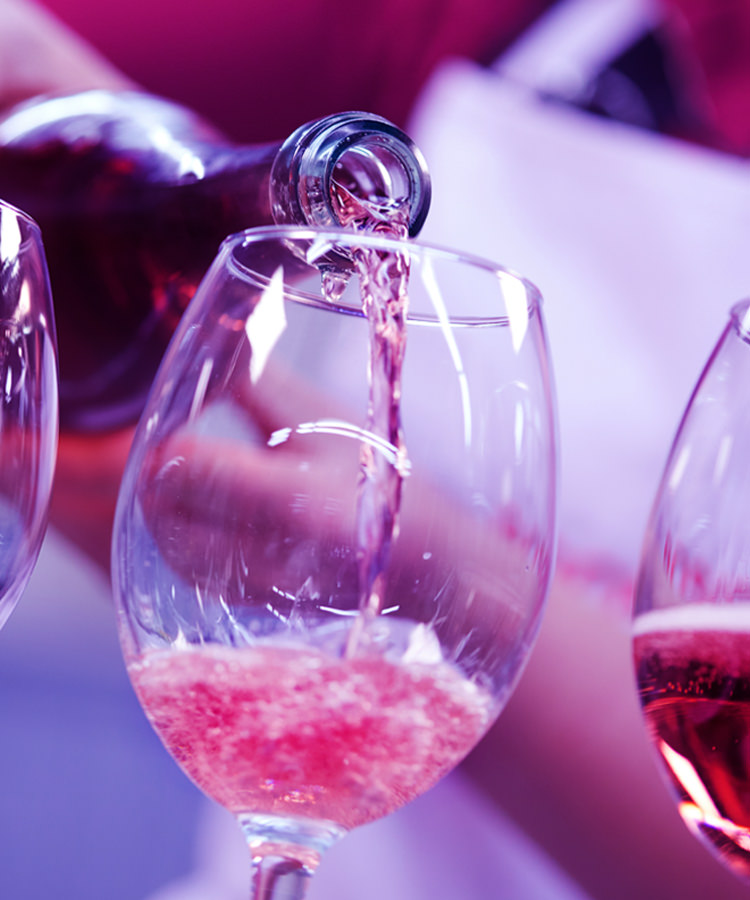
While temperatures almost certainly won’t drop until the end of September, bringing dismay to every child who selected a sweater as their first-day-of-school outfit, the week before Labor Day sure feels like the end of summer.
In these last legs of summertime, you might tire of the wines you’ve been sipping all season long. When rosé is passé and white just isn’t satiating, where to turn? Revive the palate for one last hurrah with a category that celebrates fall flavors and summer’s vivacity: sparkling red wine.
While new types of bubbly reds are popping up in regions worldwide, such as Portugal, two styles remain the poster children of all things red and effervescent: Lambrusco and sparkling Shiraz. Both are often stereotyped as cloyingly sweet, cheap, and low-quality (and in the ’70s and ’80s they often were), but many modern producers are making dry, first-rate bottles that combine fun, refreshing bubbles with classic red fruit and character.
Ready to soak up as much sun as possible? Pop a bottle and let’s go!
Lambrusco
Chances are, most of us have already come across a Lambrusco or two. But today’s Lambrusco isn’t the sticky-sweet frizzante foil that it once was.
Lambrusco production dominates quite a large area of Italy’s Emilia-Romagna region, particularly in the provinces of Modena and Reggio. Just to make things confusing, Lambrusco is not just one region and one grape; the category comprises several DOC regions making wine from a specific family of grapes.
Producers attempting to make higher-quality bubbles now focus on the best of these Lambrusco grapes: Lambrusco Grasparossa and Lambrusco di Sorbara. Each produces a very different style of wine. Lambrusco Grasparossa makes bold sparkling reds, with dark blackberry and blueberry fruit, often with some noticeable tannins as well. Wines made from Lambrusco di Sorbara, on the other hand, are lighter and more floral and can even appear rosé-like, due to the grape’s thinner skins.
Regardless of grape, region, or style, the best Lambrusco bottles tend to have plenty of fruit up front that tapers away to a dry, earthy finish. It’s a perfect match with Italian specialties from the region, like Parmigiano-Reggiano and Prosciutto di Parma, both of which really sound like they want to accompany you on a sunny picnic this weekend.
Our pick: Fiorini “Becco Rosso” Lambrusco, Emilia-Romagna, Italy
Sparkling Shiraz
Considered a signature grape of Australia, Shiraz is made in all styles and colors. While it may seem odd to make sparkling wine from a grape that is often big and jammy in its still, flat state, it’s an Aussie tradition.
Originally created as “sparkling Burgundy” in the late 1800s, sparkling Shiraz got a bad rap during the 1970s’ Cold Duck fad, which launched in the U.S. and spread worldwide. (Sorry, Australia.) The market was clamoring for inexpensive, sweet, bubbly wine, and many Aussie producers met the demand, often carbonating poorer Shiraz lots to make a quick profit. Essentially, it was the White Zinfandel of Australia.
Today, however, sparkling Shiraz is more than the plonk that Aussies drink at Christmastime. Certain winemakers are reclaiming the style, selecting a few Shiraz plots to age in oak and undergo secondary fermentation in tanks. Areas to look for include Barossa and Coonawarra, both of which are producing quality sparkling Shiraz; and Victoria’s Great Western was the only winery to maintain the style through the years.
The next generation of sparkling Shiraz often has more richness than the average sparkling red. Expect ripe, almost jammy black fruit on the palate, plus low tannins and lively acidity and non-fruit notes like violets and spices. Modern examples are now produced in a dry style, though some may have residual sugar. Most of all, sparkling Shiraz is meant to be lighthearted and fun — just like the last weeks of summer.
Our pick: The Chook Sparkling Shiraz, McLaren Vale, Australia
